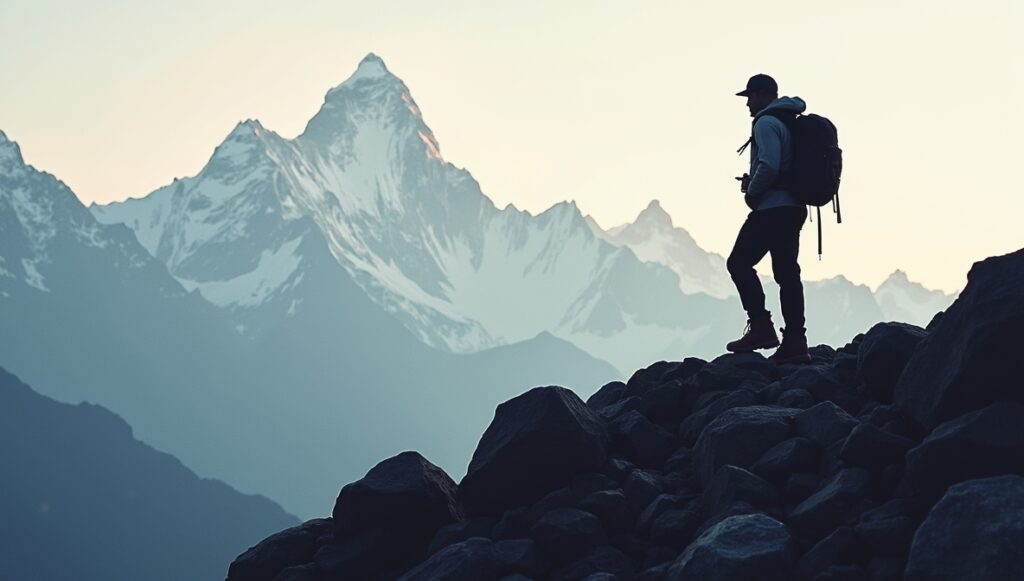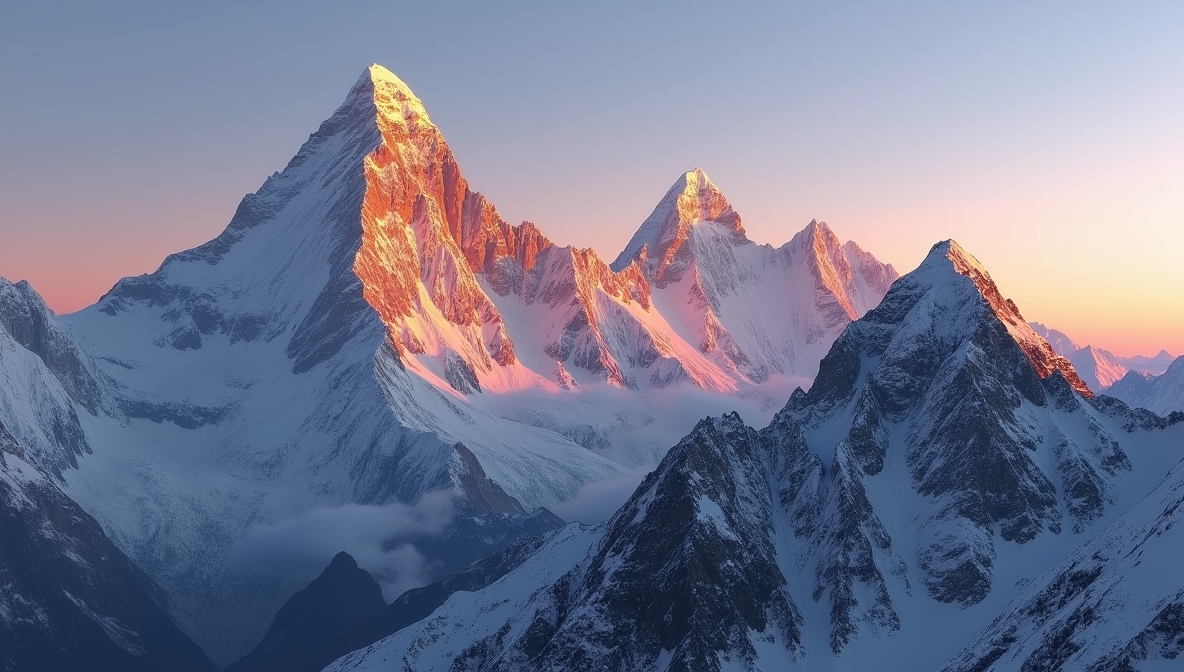Overview
Mount Everest, known locally as Sagarmatha in Nepali and Chomolungma in Tibetan, proudly claims the title of the world’s highest peak, towering at an awe-inspiring 8,848.86 meters (29,031.7 feet). Located in the heart of the Himalayas, straddling the Nepal-Tibet border, this majestic mountain has long been a symbol of human endurance and ambition. For seasoned mountaineers, summiting Everest represents the ultimate challenge. However, for the majority of travelers, trekking to Everest Base Camp (EBC) offers a thrilling and accessible alternative.
The EBC trek weaves through the stunning Sagarmatha National Park, taking adventurers past ancient monasteries, dense rhododendron forests, roaring rivers, and vibrant Sherpa villages. This journey isn’t just about reaching a destination—it’s a cultural, physical, and spiritual experience that reveals the heart of Himalayan life.


Quick Facts
-
Location: Sagarmatha National Park, Solukhumbu District, Nepal
-
Elevation: 8,848.86 meters (29,031.7 feet)
-
First Ascent: May 29, 1953, by Sir Edmund Hillary (New Zealand) and Tenzing Norgay (Nepal)
-
Best Trekking Seasons: Pre-monsoon (March–May) and post-monsoon (September–November)
-
Required Permits: TIMS Card, Sagarmatha National Park Entry Permit, and Local Government Permit
-
Currency: Nepalese Rupee (NPR)
-
Time Zone: Nepal Standard Time (UTC+5:45)
Budget Breakdown
Trekking in the Mount Everest region is relatively affordable compared to other major expeditions, though prices vary depending on comfort level and season. Here’s an estimate for a 12-day Mount Everest Base Camp trek:
| Expense Category | Cost (NPR) | Cost (USD) |
|---|---|---|
| Trekking Permits | 5,000 | $40 |
| Guide (per day) | 3,000 | $25 |
| Porter (per day) | 2,500 | $20 |
| Accommodation (per night) | 1,500 | $12 |
| Meals (per day) | 2,000 | $16 |
| Domestic Flights (RT) | 30,000 | $240 |
| Miscellaneous | 5,000 | $40 |
| Total Estimate | 100,000 | ~$800 |
Note: Costs can fluctuate depending on the season, service quality, and negotiation skills.
Getting There: Flights to Lukla
Your Mount Everest adventure begins with a scenic yet nerve-racking flight from Kathmandu to Lukla, one of the world’s most thrilling airports. Perched on a short runway carved into a mountain ridge, Lukla Airport serves as the primary gateway to the Everest region. Due to frequent weather-related disruptions, it’s wise to include buffer days in your itinerary to account for delays or cancellations.
Mount Everest Travel Guide & Safety Tips
Trekking to high altitudes is inherently risky. Follow these safety guidelines to ensure a safe and enjoyable trip:
-
Acclimatization: Take it slow. Include rest days (such as in Namche Bazaar) to adjust to the altitude and prevent Acute Mountain Sickness (AMS).
-
Stay Hydrated: Drink 3–4 liters of water daily to combat the effects of altitude.
-
Hire Professionals: Local guides and porters not only carry your load but also offer cultural insights and ensure your safety.
-
Travel Insurance: Make sure your plan includes high-altitude trekking coverage and emergency helicopter evacuation.
-
Weather Awareness: Be prepared for sudden changes. Always check forecasts and follow local advice.
Mount Everest Climate Overview (By Season)
-
Spring (March–May)
-
Temperature: -5°C to 15°C
-
Conditions: Clear skies, warm days, blooming rhododendrons
-
Notes: Pleasant weather and vibrant landscapes; great for trekking.
-
-
Monsoon (June–August)
-
Temperature: 0°C to 20°C
-
Conditions: Heavy rainfall, muddy paths, leech-prone trails
-
Notes: Risky for trekking; poor visibility and slippery conditions.
-
-
Autumn (September–November)
-
Temperature: -10°C to 10°C
-
Conditions: Crisp air, stable weather, clear mountain views
-
Notes: Most popular and ideal season for trekking.
-
-
Winter (December–February)
-
Temperature: -20°C to 5°C
-
Conditions: Cold, snow-covered trails, fewer trekkers
-
Notes: Harsh but peaceful; suitable for experienced trekkers.
-
Pro Tip: Spring and Autumn are the best seasons for trekking, offering optimal visibility and trail conditions.
Best Things to Do in the Mount Everest Region
1. Everest Base Camp Trek
The classic EBC trek takes 12–14 days round trip from Lukla. Along the way, you’ll pass through Namche Bazaar, the bustling Sherpa capital, and visit Tengboche Monastery, a cultural and scenic highlight. The trek culminates at Everest Base Camp (5,364 meters) with stunning views of the Khumbu Icefall.
2. Kala Patthar Sunrise Climb
At 5,545 meters, Kala Patthar offers arguably the best viewpoint of Everest without climbing the mountain itself. Most trekkers ascend before dawn to witness an unforgettable sunrise illuminating the Himalayan giants.
3. Visit Tengboche Monastery
Perched on a ridge with panoramic views of the Himalayas, Tengboche Monastery is a serene spiritual center. Stop here to experience local Buddhist rituals and absorb the peaceful atmosphere.
4. Explore Namche Bazaar
Often the first rest day stop, Namche Bazaar is a hub for gear shops, bakeries, and local life. Take acclimatization hikes to nearby viewpoints like the Everest View Hotel.
5. Gokyo Lakes Trek
For a quieter alternative to the EBC route, try the Gokyo Lakes trek, featuring turquoise glacial lakes, the challenging Cho La Pass, and spectacular views of Everest from Gokyo Ri.
Top Attractions in Mount Everest
-
Everest Base Camp (EBC)
-
The most iconic trekking destination in Nepal.
-
Offers close-up views of Mount Everest and surrounding giants like Lhotse and Nuptse.
-
Accessible via a scenic trek from Lukla over 12–14 days.
-
-
Kala Patthar
-
Altitude: 5,545 meters
-
Best panoramic viewpoint of Everest, especially at sunrise.
-
A must-visit for breathtaking photography and 360° Himalayan views.
-
-
Tengboche Monastery
-
The largest monastery in the Khumbu region.
-
Spiritual and cultural center for Sherpa communities.
-
Set against a stunning backdrop of Ama Dablam and Everest.
-
-
Namche Bazaar
-
Known as the “Gateway to Everest.”
-
Offers shops, cafes, museums, and panoramic acclimatization hikes.
-
Great place to rest and adjust to altitude.
-
-
Gokyo Lakes
-
A series of high-altitude glacial lakes in the Everest region.
-
Alternative trek with fewer crowds and dramatic alpine scenery.
-
Includes a climb to Gokyo Ri for stunning Mount Everest views.
-
-
Hillary Suspension Bridge
-
A high steel bridge across the Dudh Koshi River near Namche.
-
A thrilling and photogenic point along the trek.
-
-
Khumjung Village
-
Traditional Sherpa village with cultural significance.
-
Home to the famed Khumjung Monastery which claims to house a “yeti scalp.”
-
-
Ama Dablam Base Camp
-
Often called the most beautiful mountain in the Himalayas.
-
A less-visited base camp trek with rewarding views.
-
-
Sagarmatha National Park Museum
-
Located in Namche Bazaar.
-
Showcases Everest’s geography, flora, fauna, and Sherpa culture.
-
-
Helicopter Tour to Mount Everest
-
A luxury option for those short on time or unable to trek.
-
Offers aerial views of Everest, Base Camp, and the Himalayas.

